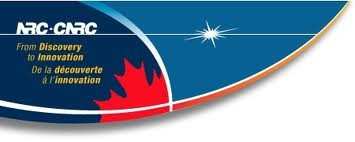Test Flight Program Conducted By NRC and Agrisoma Biosciences Included Real-Time, In-Flight Measurement Of Biojet Fuel Emissions
Working in collaboration with Agrisoma Biosciences Inc., the National Research Council of Canada (NRC) is validating biofuels in the world’s first comprehensive flight program using Honeywell Green Jet Fuel.

Residing in an NRC Industry Partnership Facility for over a decade, the Canadian firm Agrisoma Biosciences has developed the Resonance oilseed crop; a non-food feedstock crop derived from Brassica carinata that is uniquely suited for production is semi-arid areas with an oil profile optimized for biojet fuel. The crop for the test flights was grown in Saskatchewan, Canada, in the summer of 2011 and commercial production of Resonance is now underway in Western Canada, providing a secure and scalable source of feedstock for biojet manufacturing.
“The impact for rural economies and for the producers who are growing these crops is extremely positive,” said Jerzy Komorowski, General Manager of NRC Aerospace. “From seed to sky, NRC’s comprehensive range of expertise and unique research infrastructure across many technology areas supported Agrisoma with the optimization of the oilseed all the way to the in-flight tests of the biojet fuel.”
Test flights took place in Ottawa, Canada, in May and June 2012, where the biojet fuel was tested in the NRC Falcon 20 twin-engine jet at a 50/50 ratio blend with Jet A1 fuel, and then at a 60/40 ratio blend – a first ever flight with higher than certified fuel blend. A second aircraft, NRC’s T33 jet, flew behind the Falcon 20 to measure the engine emissions during both biofuel and conventional fossil fuel operation of the aircraft engines. Systems onboard the Falcon 20 allowed the team to switch back and forth between the two fuel types throughout the flight series.

The data from these test flights is the first of its kind to evaluate biojet fuel emissions released in real-time in the atmosphere, giving a clearer representation of the environmental impact of flying with biofuels in comparison with traditional fossil fuels. Preliminary results are positive and indicate that particulate emissions, including aerosols of black carbon, sulphates and by-products of the combustion of aromatic compounds, are significantly lower from biofuels than from Jet A1 fuel. “This is great news!” said Steven Fabijanski, President and CEO of Agrisoma. “The results validate the substantial impact that Resonance-based biojet fuel has in reducing the aviation carbon footprint.”
Additional test results demonstrate that engine performance with the biojet fuel blend on the ground, in flight and during in-flight engine restarts was comparable to operations with Jet A1 fuel. And the use of biojet fuel did not require changes to ground handling, fueling systems or front-line maintenance practices. The research groups at NRC are continuing their analysis of the emissions and engine performance data. “We are pleased with the initial results and we look forward to the final data,” said Jim Rekoske, Vice-President and General Manager of Renewable Energy and Chemicals for Honeywell UOP. “Honeywell Green Jet Fuel has been used successfully for dozens of flights and the results continue to demonstrate its reliability as a sustainable fuel option that offers measurable environmental benefits.”
 ANN's Daily Aero-Linx (08.27.25)
ANN's Daily Aero-Linx (08.27.25) ANN's Daily Aero-Term (08.27.25): Class C Service
ANN's Daily Aero-Term (08.27.25): Class C Service ANN FAQ: Submit a News Story!
ANN FAQ: Submit a News Story! Airborne-NextGen 08.26.25: Iran UAV Knockoffs, X-37B Spaceplane, Army Training
Airborne-NextGen 08.26.25: Iran UAV Knockoffs, X-37B Spaceplane, Army Training Classic Klyde Morris (08.25.25)
Classic Klyde Morris (08.25.25)




